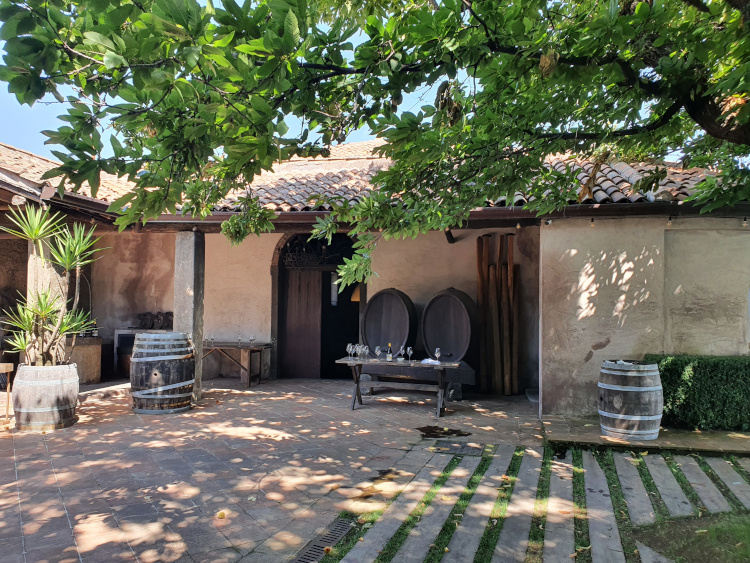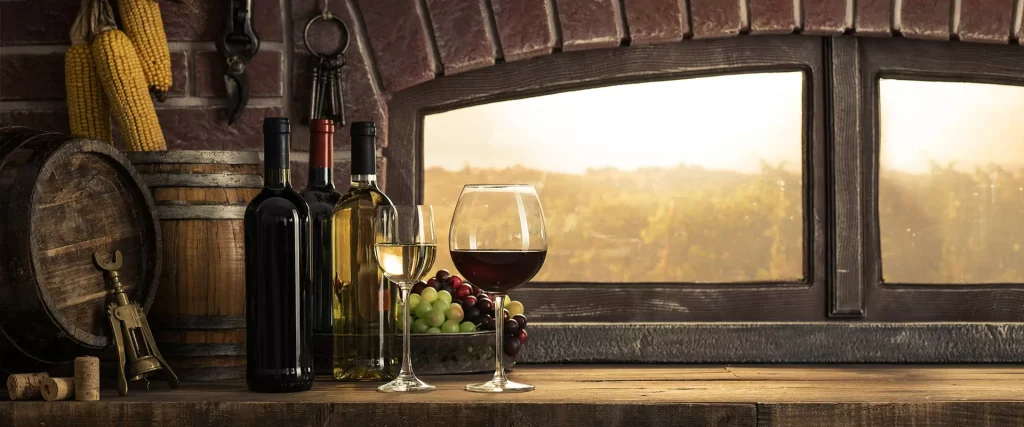What could be better than a good glass of wine after a nice hike? Discover the DOC wines of Etna with us and find out what makes them so special!
Each wine region offers its own unique places and special grape varieties. In Sicily, Etna with its 1000 faces invites you to hike, either high up on the summit craters in steep areas or through the gentle forests of Etna’s pine, beech, chestnut or birch trees. On Etna, you can reward yourself with a tasting of the special wines grown on this mineral-rich volcanic rock.
The DOC (Denominazione di origine controllata, controlled designation of origin) “Etna” is reserved for wines that fulfil the requirements laid down in the production specification. A distinction is made between the following wines:
- Etna Bianco / Etna Bianco Superiore (white wines)
- Etna Rosso / Etna Rosso Riserva (red wines)
- Etna Rosato (rosé wines)
- Etna Spumante (Sparkling wine)
The white Etna DOC wine must be made from grapes grown in the vineyards of the Etna area. It must consist of at least 60% Carricante (an ancient grape variety), a maximum of 40% Catarratto and a maximum of 15% other white, non-aromatic grapes from Sicily, such as Trebbiano or Minnella bianca.
The production of Superiore white wine is reserved for wines made from grapes grown in the area of the municipality of Milo. The wine must consist of at least 80% Carricante.
The red DOC wines “Etna” and “Etna” Reserve and the rosé wine “Etna” must contain: at least 80% Nerello Mascalese and 0 to 20% Nerello Mantellato (Nerello Cappuccio); in addition, up to 10% of other non-aromatic white grapes from Sicily may be used.
And finally for the DOC sparkling wine “Etna” (rosé or white wine): at least 60% Nerello Mascalese and a maximum of 40% other Sicilian grape varieties.

The Etna wine soils and the grape harvest
The soils on which the vines grow on Etna are of volcanic origin and are formed by the decay of lava masses, ash and lapilli.
They are generally blackish in colour and very fertile. The combination of soil, climate and the knowledge of the winemakers has made the Etna area an ideal place for producing unique wines of the highest quality.
The grapes are harvested by hand in late summer and early autumn. The harvest has always been a big celebration attended by relatives, friends and acquaintances.
The grapes are then selected and treated to better enhance the characteristics of each vineyard. Then they are made into wine in large cellars. Maturation takes place mainly in oak barrels, which are usually located in underground cellars.
On our Etna & Wine Tour, we visit one of the many wine cellars scattered throughout the Etna area and enjoy appetisers and typical dishes of the region, accompanied by suitable wines that enhance the flavour of the food.
Do you want to find out what makes Etna wine so special? Discover Mount Etna and enjoy a typical Sicilian lunch accompanied by white and red wines.
Italian and European wines
Italy offers you not only the DOC wines of Etna, but also the wines of the Veneto are known worldwide, for example: Amarone della Valpolicella, Prosecco Conegliano Valdobbiabene, Romagna wines such as Lambrusco or Tuscan wines such as Chianti and Brunello di Montalcino, etc.
Every country and region of our Europe has its own and unique wines.
North of Italy we have interesting areas for the cultivation and production of wines.
In Austria, for example, Grüner Veltliner and Riesling thrive in one of Austria’s most beautiful wine regions, the Wachau.
The Wachau stretches along the Danube between Melk and Krems and is now a UNESCO World Heritage Site. The area can be hiked in 14 stages to the north and south of the Danube. On the paths that lead up and down the hills, you will cross sunny vineyards and shady forests. They lead you to bizarre rock formations and fantastic cliffs, from where you can enjoy breathtaking views of the mighty Danube. And after the excursion, you can fortify yourself in a wine tavern, a place where the winegrowers offer numerous culinary delicacies in addition to their wines.
In Germany, Riesling, Silvaner, Müller Thurgau, Kerner, Gewürztraminer and Pinot Blanc are produced.
In Slovenia you can explore three wine regions: Primorska (coastal region), Podravska (Drava region) and Posavska (lower Sava region). Each of these regions has a variety of wines with different specialities. This is due to differences in the minerals in the soil, differences in the climate and differences in maturation.

